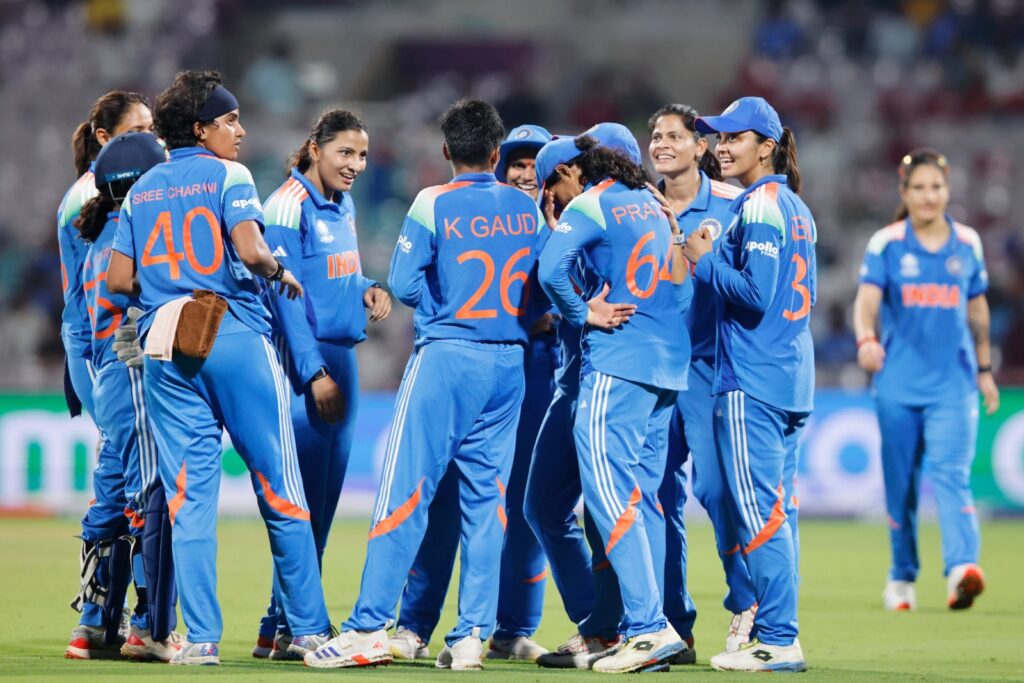
India versus New Zealand ICC World Cup clash at DY Patil Stadium drew over 23,000 fans, marking the highest recorded attendance for a Women’s World Cup group stage match. More importantly, it symbolised a paradigm shift – the arrival of women’s cricket as a mainstream cultural and commercial property. For India, Pratik Rawal has silenced critics and Smriti Mandhana has done what she does best.
This is an opportunity to transform this milestone into a movement. The turnout dispels the myth that women’s sport needs subsidies to attract fans. It demonstrates natural market demand when narratives, stars, and access align. Packed stands equal broadcast energy, sponsor visibility, and ticketing revenue – a complete ecosystem loop. This also assumes cultural legitimacy of a kind for the next generation, this is their “Eden Gardens 1987” or “Wankhede 2011” moment – proof that women’s cricket can define emotion, not just inclusion.
The inflection point in the journey of men’s cricket and the lessons it holds for women’s cricket can be best understood through three phases: colonial-era sport to mass movement, television to commercialisation, and T20 to fandom revolution. The 1983 moment turned unknowns into legends and built a generation of dreamers. A similar moment for India’s women cricketers, say, a World Cup final win at home would have a multiplier effect on fandom, sponsors, and media storytelling. The storytelling around 1983….the underdogs, Kapil’s 175*, and the World Cup lift is what etched it in collective memory. Women’s cricket needs its folklore moments retold across films, schools, and digital platforms.
The rise of satellite television and India’s economic opening resulted in matches no longer being events but becoming daily entertainment. Broadcasters like ESPN, Star, and Sony Sports built cricket personalities, not just scoreboards. Sponsorships boomed. Women’s cricket needs serialisation, not sporadic scheduling – a predictable, emotionally consistent calendar that builds habits.
Cricket turned from sport to spectacle with the IPL. Players became brands, franchises became cults, and data, technology, and entertainment fused into a single experience.
The WPL is at a similar crossroads today. To achieve the same fan gravity, it must merge drama, star culture, and accessibility with grassroots participation.Regional franchises gave fans ownership. Women’s cricket can use vernacular content and regional heroes (e.g., Shafali in Delhi, Deepti in UP) to create micro-markets.
In the current digital era, players have become direct-to-fan brands and cricket content diversified across memes, reels, fantasy leagues, and fan communities. Players don’t need only broadcasters; they can build followings via Instagram, YouTube, and WPL behind-the-scenes storytelling.
The DY Patil record crowd is not a coincidence …it’s a consequence of possibility. India now has the chance to institutionalise women’s cricket as a year-round experience and a cultural export. Women’s cricket now stands exactly where men’s cricket was pre-1983….strong, promising, and waiting for its cultural ignition. The DY Patil record attendance could be that spark. Men’s cricket became India’s religion not because of one match, but because that match became mythology. Women’s cricket now has the chance to script its own epic one that blends the glory of 1983, the accessibility of 2008, and the digital intimacy of 2023. If the DY Patil roar becomes a recurring chorus rather than a single song, we’ll know the inflection point has truly arrived.




